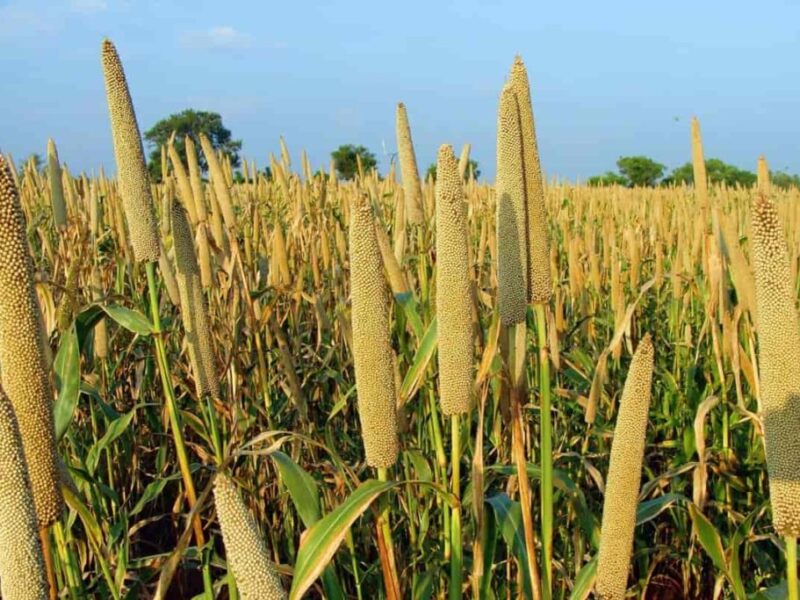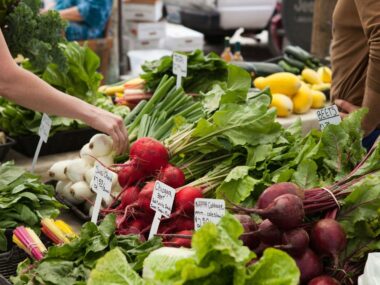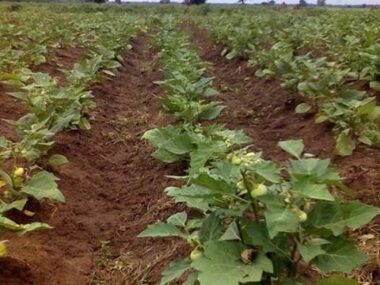Overview of Millet
Millet is a group of highly variable small-seeded grasses, grown around the world as cereal crops or grains for fodder and human food. Millets are resilient, hardy crops that can thrive in arid and semi-arid regions, making them an essential food source in areas with poor soil fertility and unpredictable rainfall. Common types of millet include pearl millet, foxtail millet, prose millet, and finger millet.

Benefits of Millet Cultivation
- Nutritional Value: Millets are rich in nutrients, including proteins, fiber, vitamins, and minerals, making them an important food source for human health.
- Drought Tolerance: Millets can grow in harsh, dry conditions where other crops might fail, ensuring food security in vulnerable regions.
- Soil Health: Millets contribute to soil health through their extensive root systems, which help prevent soil erosion and improve soil structure.
- Economic Value: Millets are a valuable cash crop for smallholder farmers, providing income and sustenance.
Types of Millet
- Pearl Millet (Pennisetum glaucum): The most widely grown type, known for its drought resistance and high nutritional value.
- Foxtail Millet (Sataria italic): Known for its quick maturity and ability to thrive in poor soils.
- Proso Millet (Panicum meliaceous): Short growing season, often used as a rotation crop.
- Finger Millet (Eleusine coracana): Highly nutritious, rich in calcium, and often used in traditional African and Indian dishes.
Climate and Soil Requirements
- Climate: Millets thrive in warm, dry climates. They are particularly suited to regions with high temperatures and low rainfall.
- Rainfall: Millets require minimal rainfall, usually between 300-500 mm annually. They are ideal for areas with irregular or unpredictable rainfall.
- Soil: Prefer well-drained, loamy to sandy soils with a pH of 5.0-7.5. They can tolerate poor soils better than many other cereals.
Stages of Millet Cultivation
- Land Preparation: Prepare the land by plowing and harrowing to create a fine seedbed. Ensure the field is free from weeds and debris.
- Seed Selection and Treatment: Use high-quality, certified seeds. Treat seeds with fungicides and insecticides to protect against soilborne diseases and pests.
- Sowing Methods:
- Broadcasting: Seeds are scattered evenly over the prepared field.
- Drilling: Seeds are sown in rows with proper spacing to ensure optimal plant growth.
- Water Management: Millets require minimal irrigation. Rely on natural rainfall, supplemented by irrigation, if necessary, particularly during dry spells.
- Fertilization: Apply organic or inorganic fertilizers based on soil fertility tests. Nitrogen, phosphorus, and potassium are essential for millet growth.
- Weed Control: Use manual weeding, herbicides, or cover crops to manage weeds.
- Pest and Disease Management: Monitor and manage common pests such as aphids, caterpillars, and diseases like blast and rust.
- Harvesting: Typically occurs 90-120 days after planting, depending on the variety. Harvest when the grains are fully mature and dry.
- Post-Harvest Processing: Involves threshing, cleaning, drying, and storage to ensure the millet is ready for market and consumption.
Water Management in Millet Cultivation
Effective water management is crucial for millet cultivation:
- Irrigation Systems: Use minimal irrigation methods like drip or sprinkler systems to conserve water.
- Rainfall Harvesting: Collect and store rainwater for use during dry periods.
- Drainage Systems: Implement proper drainage to prevent waterlogging, which can affect root development and plant health.
Fertilization Practices
Balanced fertilization is key to maximizing millet yield:
- Nitrogen (N): Essential for plant growth and development. Apply nitrogen fertilizers at planting and during the growing season.
- Phosphorus (P): Important for root development and energy transfer. Apply phosphorus fertilizers based on soil fertility tests.
- Potassium (K): Enhances disease resistance and overall plant health. Apply potassium fertilizers as needed.
- Micronutrients: Ensure adequate levels of micronutrients like zinc, iron, and manganese for optimal growth.
Common Pests and Diseases
- Aphids: Small insects that suck sap from the plant, reducing vigor.
- Control: Use insecticides, natural predators like ladybugs, and resistant varieties.
- Caterpillars: Larvae that feed on leaves, causing significant damage.
- Control: Use biological control agents, insecticides, and manual removal.
- Blast: A fungal disease that affects leaves, stems, and panicles.
- Control: Use fungicides, resistant varieties, and proper field sanitation.
- Rust: A fungal disease that causes rust-colored pustules on leaves and stems.
- Control: Use fungicides, resistant varieties, and ensure proper air circulation.
Harvesting and Post-Harvest Practices
- Timing: Harvest when grains are fully mature and dry. Delayed harvesting can lead to grain shattering and loss.
- Methods: Use mechanical harvesters or manual methods, depending on the scale of cultivation.
- Threshing: Separate the grains from the stalks using mechanical threshers or manual methods.
- Drying: Reduce moisture content to below 13% for safe storage.
- Cleaning and Grading: Remove debris and damaged grains to ensure quality.
- Storage: Store in cool, dry conditions to prevent spoilage and pest infestation.
Sustainable Millet Cultivation Practices
- Crop Rotation: Rotate millets with other crops like legumes or cereals to break pest and disease cycles and improve soil health.
- Cover Crops: Plant cover crops during the off-season to protect and enrich the soil.
- Integrated Pest Management (IPM): Combine biological, cultural, and chemical methods to manage pests sustainably.
- Organic Farming: Avoid synthetic chemicals, using organic fertilizers and natural pest control methods.
Innovations in Millet Farming
- High-Yielding Varieties (HYVs): Developed to increase productivity and resist diseases.
- Genetically Modified (GM) Millets: Engineered for traits like pest resistance and improved nutritional content.
- Precision Agriculture: Uses technology like GPS, drones, and satellite imagery for efficient field monitoring and management.
- Conservation Tillage: Reduces soil erosion and conserves moisture by leaving crop residues on the field.
Economic Importance of Millets
- Global Trade: Major producing countries include India, Nigeria, Niger, and China. Importing countries include the USA, the European Union, and Japan.
- Employment: Provides livelihoods for millions of farmers and workers in related industries.
- Food Security: Essential for the food security of many developing nations, providing a crucial source of nutrition and income.
Environmental Considerations
- Water Use Efficiency: Implement practices like drip irrigation to conserve water.
- Soil Health: Use crop rotation and organic amendments to maintain soil fertility.
- Climate Change Adaptation: Develop and adopt resilient millet varieties and farming practices to cope with changing climate conditions.
Challenges in Millet Cultivation
- Climate Variability: Unpredictable weather patterns can affect water availability and crop health.
- Pest and Disease Pressure: Requires constant monitoring and management.
- Labor Shortages: Mechanization and improved labor practices are needed to address this issue.
- Market Fluctuations: Prices can be volatile, impacting farmer income.
Conclusion
Millet cultivation during the rainy season presents a unique opportunity to leverage natural water resources for optimal growth. By understanding the requirements, best practices, and challenges associated with millet farming, farmers can enhance productivity, ensure food security, and contribute to the global millet supply. Sustainable practices and technological innovations will play a crucial role in meeting the future demands of millet production while preserving environmental health.










